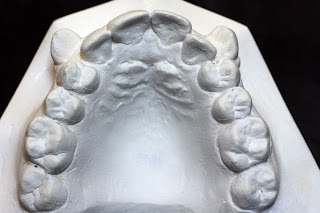ASHLEY HOWE’S ANALYSIS
Parameters
· TTM - Refers to sum of the mesiodistal
width of the teeth from first molar to first molar
· Premolar width (PMD) - Arch width is
measured from the buccal cusp tips of the first premolar on one side to the
buccal cusp tip on other side
· PMBAW (premolar basal arch width) - measured from the root apices of the
first premolar on one side to the first premolar on other side
FIG 20 : Placement of dividers distal to the canine eminence to
measure PMBAW
·
Canine Fossa width - Measurement of
width from canine fossa (immediate distal to canine root eminence) of one side
to the other (Fig 20) gives us the width of the dental arch at the apical base
or the junction between the basal bone & alveolar process
•
If canine
fossa is not clear, measurement is
made from a point that is 8 mm below the crest of interdental papilla distal to
canine
Following
measurements have to be obtained
1.
Percentage
of PMD to TTM
PMD X 100
TTM
2.
Percentage
of PMBAW to TTM
PMBAW X 100
TTM
Inference
If PMBAW > PMD :-
it is an indication that basal
arch is sufficient to allow expansion
If PMD > PMBAW :-
Can be three possibilities
1) Contraindicated for expansion
2) Move teeth distally
3) Extract some teeth
•
According
to Ashley Howe, to achieve normal occlusion with a full complement of teeth
PMBAW should be 44% of TTM
•
Therefore
if PMBAW X 100/TTM is:
a) if 37% or less
case
requires extraction
b) if 44% or more
treatment by non-extraction
c) if between 37-44%
(border line case) may/may not
require extraction




















